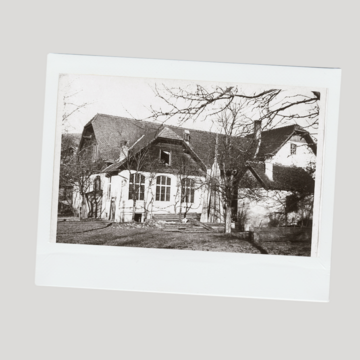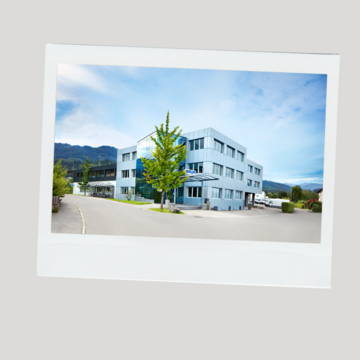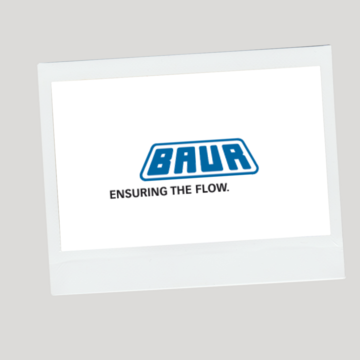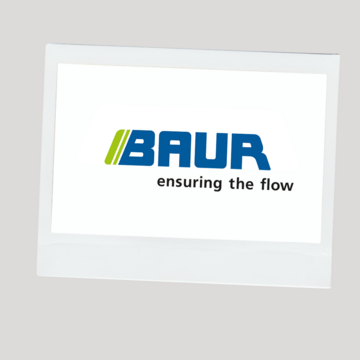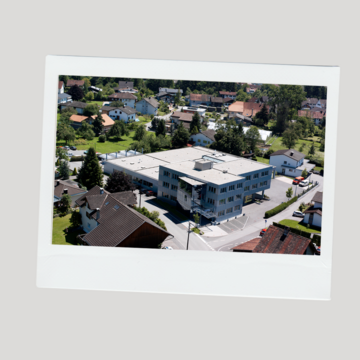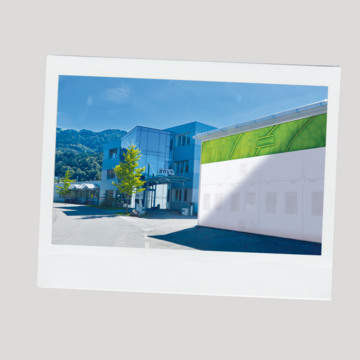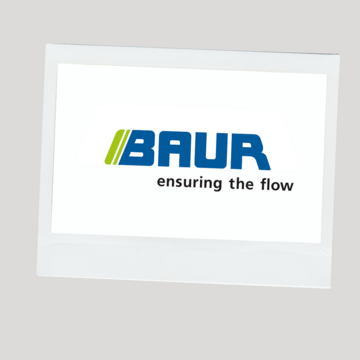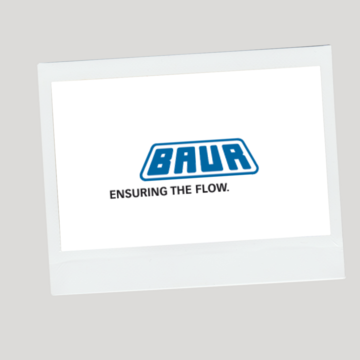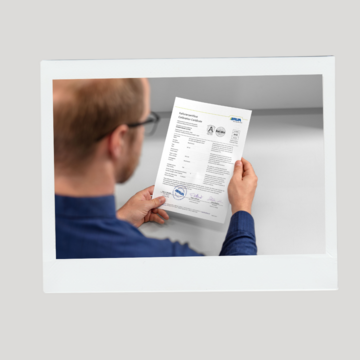45,000 Volts of Enthusiasm
Read about the thrilling history of BAUR GmbH

BAUR looks back at an eventful company history. What began 75 years ago as a small family-owned set-up, is one of today's leading international companies in the field of testing and measurement technology. BAUR counts most of the energy providers in the world among its satisfied customers.
Since 1945, when Josef Baur established the "physical and technical workshops" with three employees in his father’s old embroidery building, passion for technology has been his motivation. His extensive experience in radio and broadcasting technology was a big contribution to his young company. He built the first battery radio receiver in Vorarlberg when he was just 14. The first customer of the fledgling company was the City of Vienna with its order for a custom-made design for a highly sensitive mine detector.
The key periods
Let's get started right away!
1945
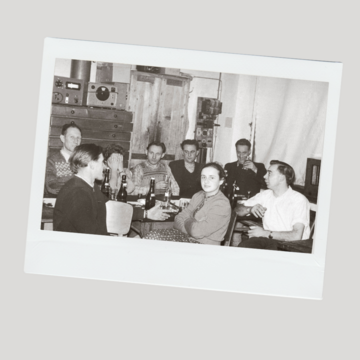
June 1945, World War II is at an end. Josef Baur sees this as a new beginning and the perfect time to bring his ideas to life. Filled with euphoria and enthusiasm, Josef and his brother Willi lay the foundations for the BAUR company in the old embroidery building behind their house. With nothing more than a few boards, the brothers create the first departments and get to work. Under the then name “Josef Baur physikalisch-technische Werkstätten” (Josef Baur Physical and Technical Workshops), the four-man team shared a common goal: to do something positive for the people of Austria and the country’s economy by putting their know-how and tools to good use. Together with his cousin Ewald Baur and Alois Knünz, Josef Baur often found himself repairing radios and X-ray units. High-voltage transformers with a voltage of up to 150,000 volts were a central component of this equipment. Such voltages could also be used to test power cables and insulating liquids. However, Josef was not aware of this yet. In the excitement and fervour of those first few days, Josef Baur forgets to register the business. That’s why the official history of the Baur company does not start until 15 October 1945.
Although the small team in Sulz is family-based, the young company has an open outlook when it comes to developing new devices. Engineers from near and far come and go in the small workshops at the back of the house. Even back then, Josef Baur recognised the potential of good networking and laid the foundations for today's global network.
1948
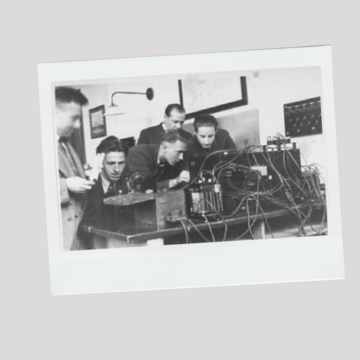
The economy is on the up! The old 6 kV medium-voltage network is upgraded to modern 10.8 kV cables. The general demand for electricity is increasing.
The problem: plans and records of the cables that had been laid were lost during the war. So how would it be possible to now locate the most sensitive part, the connection joints?
Electrical engineer Christoff Mittelberger, who worked at VKW, already had a solution in mind. His idea: to short a cable pair at one end and connect an AC voltage with a fixed, "audible" frequency at the other end using a synthesiser. This creates a longitudinal magnetic field around the cable which, depending on the length, "oscillates" over the route and cable. These “oscillations” should be quite easy to measure with a magnetic antenna or coil. The audio frequency signal is much stronger over a joint and disappears completely after a cable fault or short-circuit. This is also known as the twist method.
1949
As for the BAUR logo, was it the shape of the housing of one of the company's first measuring devices that led to Maria Baur's design for the lettering or was it the other way around? Either way, the lettering has remained almost unchanged to this day. The brand claim "Ensuring the Flow" has accompanied the logo for several years. BAUR not only ensures the flow of current, but also flow in development processes and in relationships with customers and employees.
1950
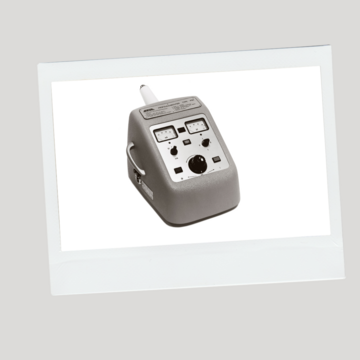
An important year: Josef Baur and Christoff Mittelberger meet for the first time and quickly discover that they are on the same wavelength. Together, they succeed in putting theory into practice and achieve something the competition hasn't managed to do: develop a high-voltage generator that is around 100 kg lighter than other devices of this type. The result? The PKG 35 – a compact, portable cable test device weighing just 20 kg. A short time later, they increase the voltage from 35 to 45 kilovolts. The device has a new name: PGK 45.
1951
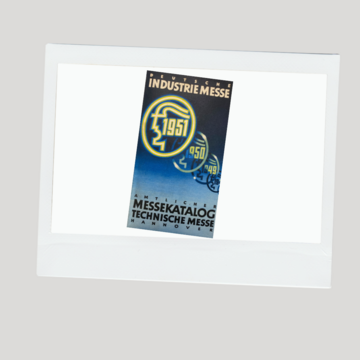
Josef Baur understood that the cable business could only be of commercial significance if it reached the international market. Germany's leading industrial fair, the "Deutsche Industrie-Messe", in Hannover provided the perfect opportunity. Despite not having his own stand at the fair, Josef was sure that he would have the opportunity to demonstrate the PGK 35 somewhere. Josef was in luck. He managed to demonstrate his product in the corner of the stand belonging to the oldest cable manufacturer. It flashed and banged, drawing the attention of visitors, who crowded around Josef and his device. As Josef noted at the time, it was a "huge success!".
1955
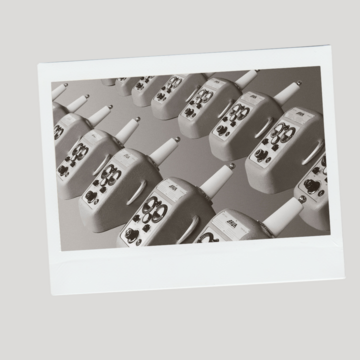
Josef Baur acquires the worldwide exclusive licence. The cable fault location business area is born!
Following the development of the cable test generator, BAUR invents a special transformer winding technology that makes it possible to build lighter devices. Based on this, the team in Sulz designs a prototype for oil testing: the PGO 60. It is five to ten times lighter than existing devices. It is a major breakthrough, which even results in changes to the VDE 0370 standard.
"I would like to supply as many countries as I have employees." - Josef Baur
1960
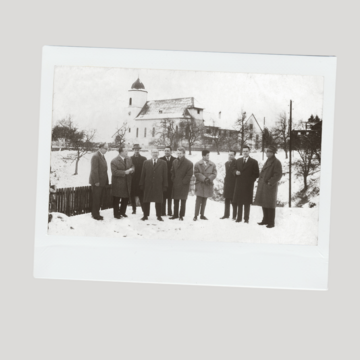
And so we come to the first meeting of representatives in Viktorsberg. Representatives from Germany, Switzerland, the Balkans, the Benelux countries, France, and Spain are all in attendance. These relationships had been fostered since the mid-1950s. A great deal of importance is attached to friendly cooperation. Josef Baur gave his representatives free rein and relied on their market knowledge. The only sticking point was language. Neither Josef Baur nor engineer Paul Birck, the then director of operations and second in charge at the company, could speak another language. German language skills are therefore a deciding factor in the selection of representatives.
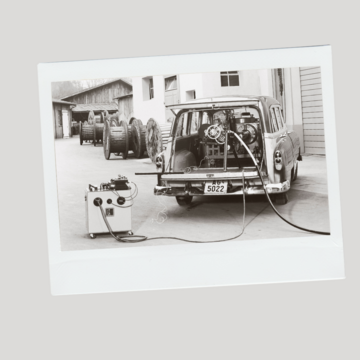
By the end of the 1960s, BAUR is already producing all the devices required for cable fault location in low- and medium-voltage cables. But how to get the devices to the place where they need to be used?
Longstanding representative and friend of the family Hans Gasenzer paved the way for the cable test van that is used today. The devices are subsequently installed in a delivery van that is so light in weight that anyone with a standard driving licence may drive it. The first test van is delivered to Bratislava in person by Martin Baur.
Martin is called to Sulz, with him comes internationalisation
1970
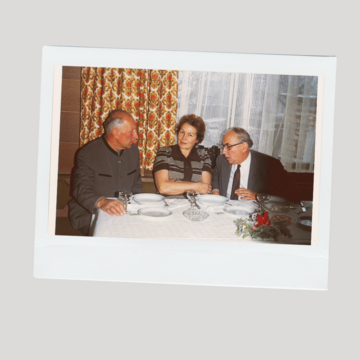
A new decade begins. The BAUR family now has more than 50 employees. Josef Baur presides as the head of the family. He is highly regarded by all and known for having a knack for dealing with employees. Paul Birck, his trusted number two, has worked by his side for several years, managing day-to-day operations in Sulz while Josef is away on numerous business trips. Paul Birck retires in 1973. His successor, Volker Krieg, has worked as a sales engineer in the company since the early 1960s and brings a great deal of experience to the role, as well as a good understanding of customer requirements.
1974
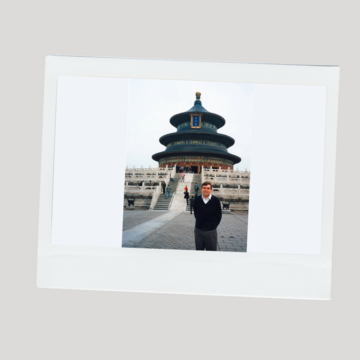
In the early 1970s, Josef’s son Martin joins the company. He speaks several languages fluently. Internationalisation is in full swing. BAUR devices find their way to Asia, North and South America, and are soon available right around the world! From 1974 onwards, Martin makes regular trips to demonstrate the company's ideas, and their great benefits, on site.
1976
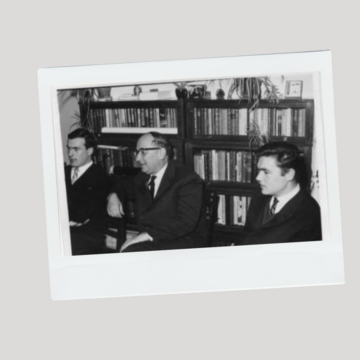
In 1976, Josef hands over full responsibility to Martin. On the first of April, “Baur physikalisch-technische Werkstätten” is renamed “Baur Prüf- und Messtechnik KG”. Martin’s goal is the future-oriented organisation of the company. It is to become a modern company with lean processes.
By the end of the 1970s, the company already has seventy employees. Baur now has clearly structured departments: development, mechanical design, processing planning, production, technical management, sales, and executive management will all be separate from now on.
Competition is growing non-stop
1980
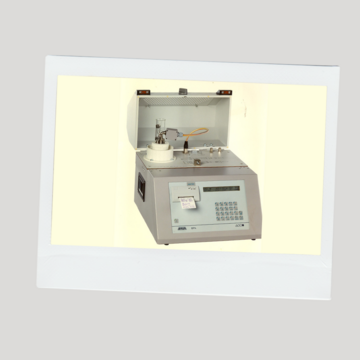
At this time, the company’s main competitors are based in Germany. They include Seba Dynatronic and Hagenuk, which will end up being bought out by fierce rival Seba in 1995. BAUR is something of a rarity in this market, enjoying worldwide recognition. The devices are seen as practical, the measurement results are accurate, and employee commitment exceeds the average.
1982
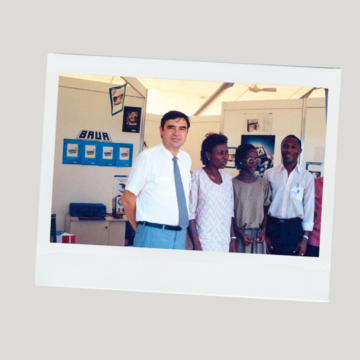
Internationalisation still remains high on the agenda. 1982 sees the opening of the company’s first branch in Germany, followed by Spain in 1984 and Great Britain in 1986.
What makes BAUR special is that Martin ensures that the relationships with sales partners get the personal touch. He is an important link between BAUR Sulz and the rest of the world.
1987
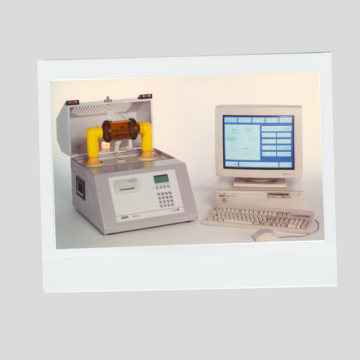
All departments are working at full speed. BAUR launches the DTA on the market. It is the first processor-controlled insulation tester with a digital display and automatic mean value calculation.
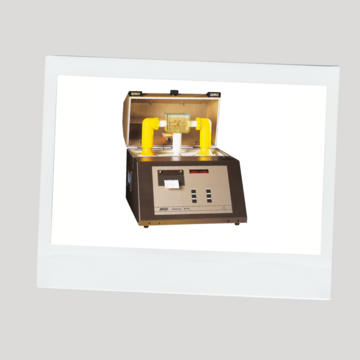
The DTL is born – a world first! It is a programmable device that combines several methods for measuring the dissipation factor and calculating the resistance of transformer oils .
Since the 1970s, energy suppliers all over the world have been puzzled by something: on new cables, short-circuits accumulate after ten to fifteen years. After some initial confusion, technicians discover "trees" in the insulating layer of faulty cables, the consequence of which is a short-circuit. If these cables that have minor faults are tested using conventional DC voltage methods, the cables will be destroyed. Teams all over the world looked for a solution, and the solution was found in Sulz. AC voltages are measured with several quality criteria. The measurement of the dissipation factor, the ratio of active current to reactive current in the insulation, provides the ideal basis. To ensure that the measuring devices for this are as compact as possible, the selected test current frequency is much smaller: 0.1 Hertz, Very Low Frequency (VLF) – one oscillation in 10 seconds.
1989
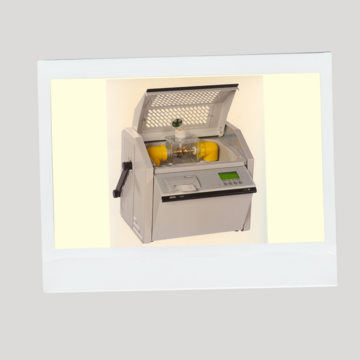
BAUR amazes its customers by introducing the world's smallest portable oil tester. The DPA 60 weighs 20 kg and is designed for 60,000 V measuring voltages.
BAUR goes global
1991
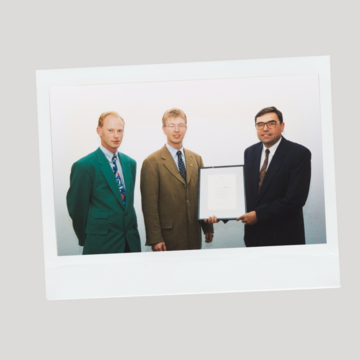
A new decade begins and BAUR ventures across the pond! In 1991, it establishes joint ventures in the USA and India. Our devices are durable – Baur wants to tap into new markets by first concentrating on Asia, specifically the Far East, as well as Australia and the Arab world. Martin Baur and the team of sales engineers travel to these countries frequently and in the early 1990s they manage to impress engineers in China with Baur's measuring devices for cable fault location. What once took three days to accomplish, can be completed in just a few minutes using these devices. The result: BAUR sells more systems in 1995 than in the previous ten years.
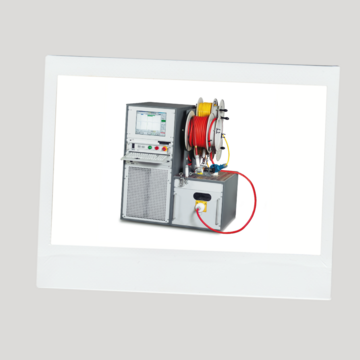
In 1994, BAUR introduces a reliable VLF tester to the market, the PHG 80 , and patents the truesinus method, which to this day continues to provide the technical basis for extremely precise measurement results.
1996
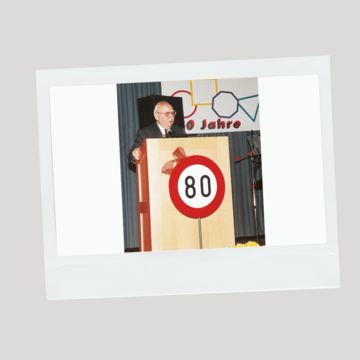
The coming years bring change. Martin Baur concentrates on his consultancy activities. The company is no longer managed internally. Everything is intended to be more cost-effective; there are staff cutbacks and the apprenticeship programme is wound down. Even production is to be moved to the Czech Republic to cut costs.
The Baur family and employees intervene. Together, they manage to establish a better working hours model. These are eventful times.
Rumours are circulating that Baur has been sold to a German company. The workforce becomes increasingly downhearted. This is especially difficult for Josef Baur to witness. In his speech on the occasion of his 80th birthday, he is deeply moved that Baur employees still hold their senior boss in such high regard. With tears in his eyes, he thanks them for their loyalty and dedication, which has not wavered even in times like these. In 1996, Josef transfers his company shares to Martin and his wife Valentine Baur. The company becomes BAUR Prüf- und Messtechnik GmbH.
Josef Baur dies on 2 December 1997 at the age of 85.
1998
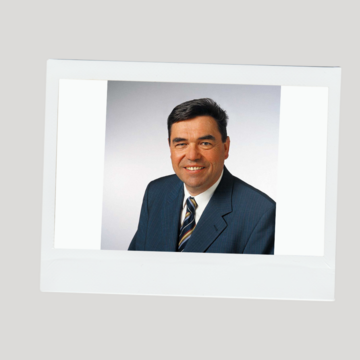
The fight for BAUR continues. It is led by Martin Baur. He respects the opinions of longstanding employees, who make it clear to him that he should take over the management of the company again. Martin heeds their advice and takes over as CEO in 1998. The workforce breathes a sigh of relief.
And so, following turbulent times, BAUR returns to its former work ethic and corporate philosophy.
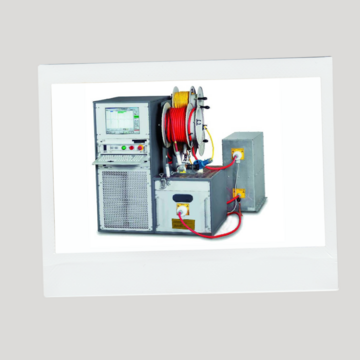
A short time later, BAUR is able to present the first PHG TD/PD VLF diagnostics system with tan delta and partial discharge measurement to its customers.
A new era begins
2003
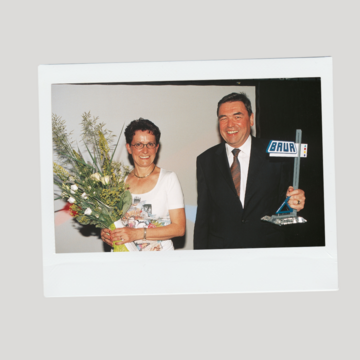
A new millennium is upon us! In 2003, Valentine Baur's particular perspective as a woman and her social competence are greatly valued by the company as she takes up the role of assistant to the executive board. And no wonder, since her marriage to Martin in 1974 she has always been a welcome “boss” in the company.
2004
The new extension is opened and provides new space for the workforce. Production and installation space have been increased by 50%. There is additional office space, plus a new customer area and acceptance area.
2005
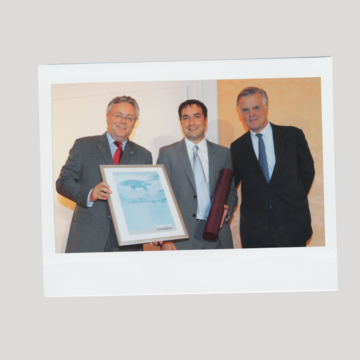
The next generation of the Baur family joins the company. Markus Baur begins his career at the company in HR.
2006
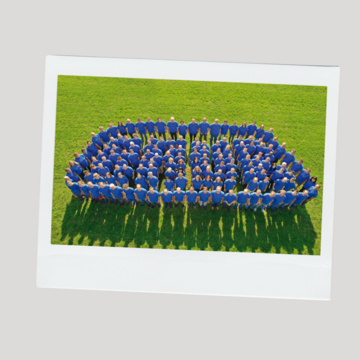
The company enters 2006 with growing optimism. Within the space of two years, BAUR recruits around 40 new employees. There is a gold-rush atmosphere.
2008

Unfortunately, BAUR too falls victim to the global economic crisis of 2008. BAUR must cut back wherever it can, including staff.
But these difficult years also deliver some great things. In 2008, the BAUR innovation process is established in the company. Developed by key members of staff and Martin Baur, this process is intended to ensure that new developments are as target-oriented and practicable as possible, thus leading BAUR successfully into the future. 2008 also marks a huge achievement for BAUR, when it receives the Great Place to Work award for the first time!
The new generation
2011
Having learnt some important lessons from the global economic crisis, BAUR strides into the future full of energy. The annexe, which was only built in 2004, is being extended. As an interim measure, an office set up in a portable container in the West Car Park provides space for ideas, developments, and improvements.
What was initially conceived as a temporary solution ends up being in use for almost a decade.
2012
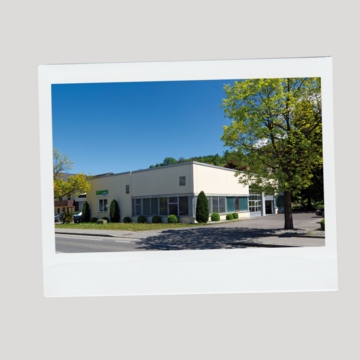
Where there's space for new ideas, there also needs to be space to implement them. The demand for electrical system assembly prompts further growth at BAUR: the "Kopfhalle" is opened in Röthis as a second production location for the Electrical System Assembly department.
To mark the 100th anniversary of Josef Baur's birth, the book "45.000 Volt Begeisterung" (45,000 Volts of Enthusiasm) is published.
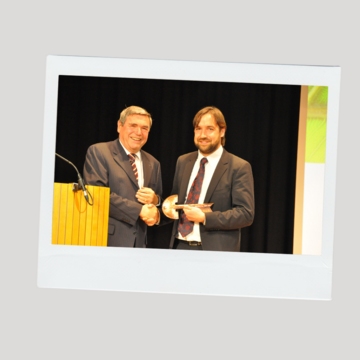
In 2014, Markus Baur takes over as CEO, becoming the third generation of the family to manage the company.
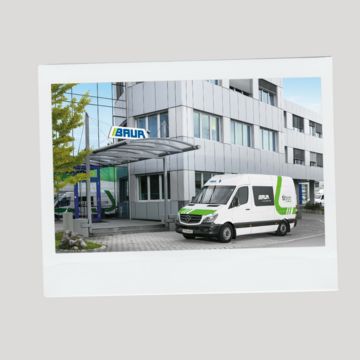
The BAUR team is noticeably expanding: at the 2014 Global Sales Conference, the new titron® test van is presented to the company's global representatives.
2015
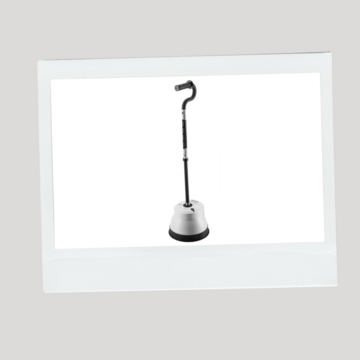
In 2015 and 2016, it becomes necessary to realign the organisational structure.
BAUR continues to develop and in the coming years impresses with its innovation and quality.
The result is protrac®, a new fault location device.
2018
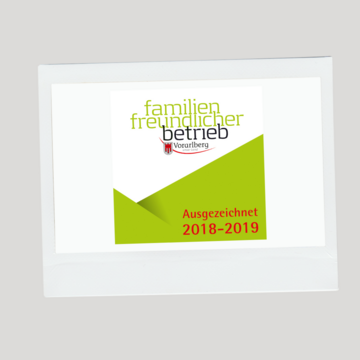
As a company, BAUR has always been not only innovative, but also an attractive prospective employer. BAUR acknowledges that young employees come with needs, such as a healthy work-life balance. In 2018, the company is recognised as a "family-friendly company" by the state of Vorarlberg.
2019

BAUR introduces the market to the software of the future. With the statex® analysis software, it is possible to calculate the statistical remaining life time of cables more accurately than ever before. Investments can be planned and current flow is ensured.

In 2019 BAUR once again receives the "Great Place to Work" award. In a modern organisation, the values of transparency, interconnectedness, and participation are a natural part of the work ethic.
In the autumn of 2019, the staff in the office container move into the new halls of the extension.
Eventful years
2020
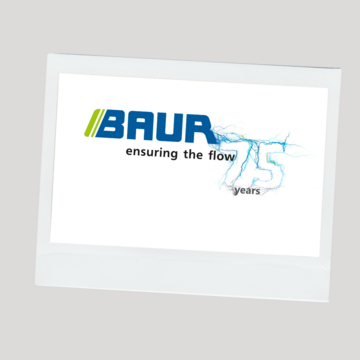
The anniversary year 2020 begins with high motivation and a positive outlook. However, the global COVID-19 pandemic does not stop at BAUR. The new normal is: working from home, quarantines, no travelling abroad and a high level of uncertainty about the course of business. The anniversary year cannot be celebrated properly.
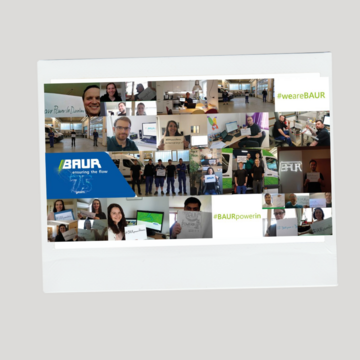
Adverse circumstances cannot stop BAUR from improving in many areas. In terms of processes, an important innovation succeeds: CRM software is introduced and enables even better customer service. BAUR has developed into an agile and lively organisation and is ready for the next decade.
2021
In 2021, we modernise our employer branding in order to position our company even more strongly as an attractive employer in the public perception. A professional photo shoot with our employees creates authentic and inspiring images that are used on our new careers website, among other channels. Our job adverts are also given a fresh layout that better reflects the values and culture of our company and appeals to potential talent.
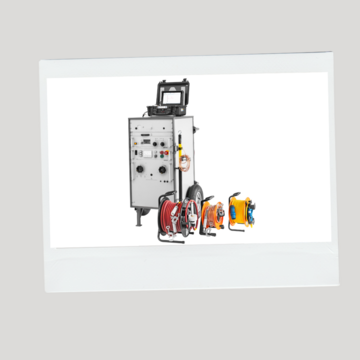
Syscompact 400: Smart solution for cable fault location
In 2022, BAUR revolutionises cable fault location with the new intuitive BAUR BUI-F app, which enables control of the IRG 400 time domain reflectometer installed in the Syscompact 400. Wi-Fi connectivity between Syscompact and the control device ensures maximum flexibility and convenience during TDR measurement. With its precise fault pre-location and pin-pointing methods and its compact design, the system is the ideal solution for efficient use in modern power supply networks.

AFP audio frequency probe: 3D precision
BAUR revolutionises tracing and fault location with the new AFP audio frequency probe and its innovative 3D space coil. Signals from all three axes are displayed and compared in real time – without the need for time-consuming probe alignment. As part of the protrac® all-in-one system, AFP offers a wide range of applications such as precise tracing, short-circuit fault location, and joint search. Flexible frequency settings and intuitive operation make the audio frequency probe an indispensable tool for fast and accurate diagnostics.
Since 2022, BAUR GmbH has been operating a wholly-owned subsidiary in Lima, Peru. With a dedicated team of three specialists, the subsidiary provides services, training, and calibration for customers throughout Latin America. This local presence enables BAUR to serve customers in the region more rapidly and efficiently, while ensuring the same high quality of services.
BAUR continues to grow: In the same year, we open a Service Hub in Italy located in Rome. This new facility enables our Italian customers to have their devices and systems conveniently serviced and repaired on site by a team of trained BAUR experts. The current team at BAUR Italy comprises two sales professionals and three after-sales specialists. They are all highly qualified to meet the needs of our Italian customers.
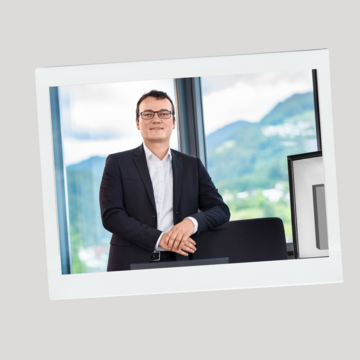
As of 2022, the BAUR executive management team consists of CEO Markus Baur, Sales Director Gregor Pudlo, and CFO Gernot Hiebeler (who succeeds Wolfgang Walser). At the same time, the extended management team is also established. This team supports and assists the executive management team in all important matters.

In 2022, BAUR receives ISO 14001 certification - a significant milestone for our environmental management system. This internationally recognised standard confirms that we systematically integrate environmentally friendly practices into our business processes and continuously work to improve our environmental performance. By complying with ISO 14001, BAUR is actively contributing to environmental protection and focussing on responsible resource management.
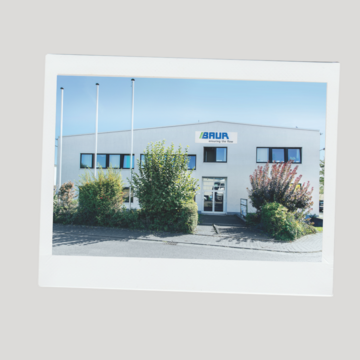
In 2022, we establish our development and service location in Coswig near Dresden. This means that we now have a second location in Germany in addition to our headquarters in Grevenbroich (North Rhine-Westphalia).
In Coswig, we develop new BAUR products and drive innovation together with the teams in Sulz. At the same time, the 6-strong team also offers services for the BAUR product range.
2023

IRG 400 portable: Efficient cable fault location made easy
With the BAUR BUI-F app and the IRG 400 portable time domain reflectometer, BAUR takes cable fault location to a new level in 2023. The portable measuring device enables fast and precise cable fault pre-location on 1- and 3-phase cables. Thanks to intuitive operation via a tablet and wireless connection, it is safe and convenient to use – even in challenging environments. The robust, weatherproof design and the practical transport case make the device the ideal companion for mobile use.
In May 2023, the calibration laboratory of BAUR GmbH is accredited according to ISO/IEC 17025:2017 by the national accreditation body of Austria. Thanks to the International Laboratory Accreditation Cooperation Mutual Recognition Arrangement (ILAC MRA), BAUR calibration certificates are now recognised around the globe.
BAUR is now one of the few accredited calibration laboratories in Austria, offering precise and internationally recognised calibrations in the areas of high voltage, voltage, current, and resistance.
The accreditation demonstrates the competence, independence, and performance capabilities of the laboratory and, among other things, includes the calibration of high-voltage measuring systems and oil breakdown voltage testers. Devices from other manufacturers can also be calibrated.
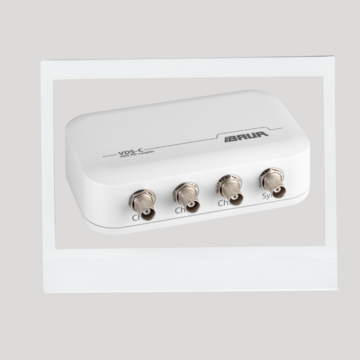
liona VDS-C: Patented technology for advanced partial discharge measurement
With the patented VDS PD coupler, our company sets new standards in partial discharge measurement on cables. Since 2023, it has thus been possible to reliably detect partial discharges – without having to de-energise the cables. Thanks to synchronous measurement, the technology delivers precise results, even when dealing with challenging cable types such as belted cables. Straightforward spot tests save time and enable targeted planning of comprehensive cable diagnostics.
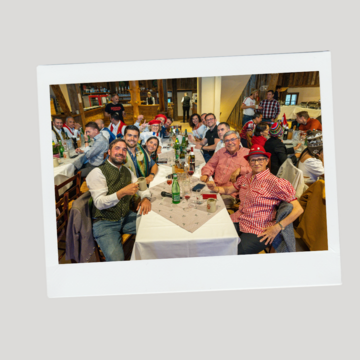
In May 2023, we host our Global Sales Conference in Salzburg, an outstanding event that brings together 140 participants from all over the world. Over four exciting days, we offer a varied programme of seminars, workshops, lectures and evening events. This opportunity not only enables an intensive professional exchange, but also strengthens the cohesion within the BAUR network. The event is a complete success and will remain an unforgettable highlight in our memories.
In 2023 we launch the BAUR Global Academy. Its versatile training programme provides in-depth knowledge about the theory and practice of cable measurement technology. We offer training courses in various countries on the topics of cable fault location, cable testing and diagnostics and oil testing - practical and application-orientated.
2024
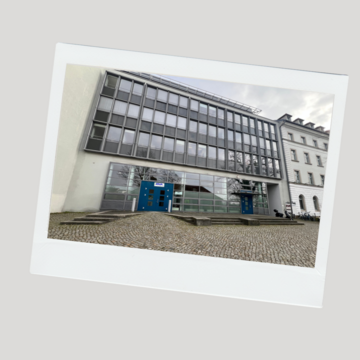
In 2024, the Dresden location will be relocated to the city centre of Dresden in order to strengthen the proximity to our partners and universities. The team's innovative product development activities will continue seamlessly at the new location in the Waldschlösschen complex ‘Am Brauhaus’ in Dresden.
